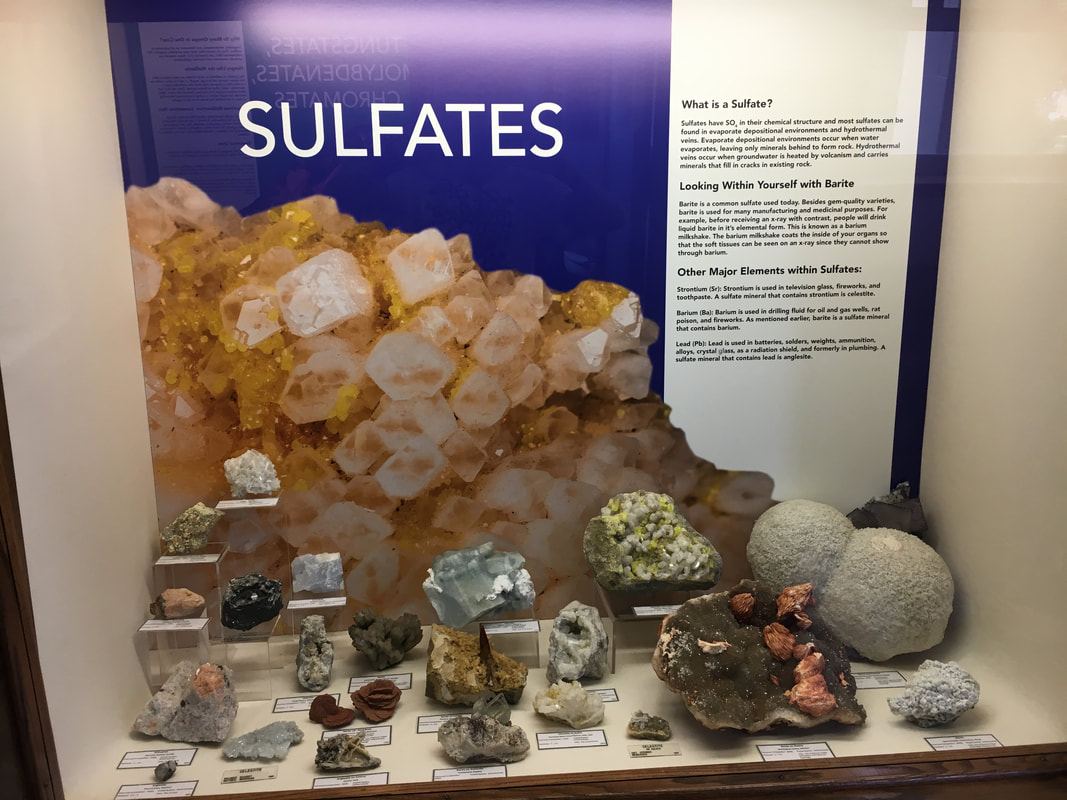 Entrance to Museum of Geology at SD MINES, O'Harra Building Entrance to Museum of Geology at SD MINES, O'Harra Building I recently visited a small but mighty museum in Rapid City, South Dakota—the Museum of Geology located in the South Dakota School of Mines & Technology (SD MINES). It’s a gem of a museum (pardon the pun). I share here highlights, pictures and describe why it’s an excellent example of a visitor-focused space that provides ideal conditions for learning and enjoyment. The SD MINES is a public research university established in 1885 with a focus on the industry of mining; it’s evolved into a leading science and engineering university in the region. The museum opened the same year as the school with the loan of a professor’s collection of over 5000 mineral and fossil specimens. In 1923 the museum opened to the public and like today, with no admission fees. In 1899 the first curated specimen was added--an alligator snout discovered in the Badlands (a fossil-rich region in SD consisting of 244,000 acres of hills, mountains and grasslands) by Professor O’Harra while on the school’s first paleontology expedition. The museum focuses on two areas: 1) South Dakota and Northern Plains fossils and 2) minerals from South Dakota and around the world. Dinosaurs and More The dinosaurs are really impressive; there’s nothing like large-scale skeletons of historic beasts to capture visitors’ imaginations. They almost embrace you when you first enter; though small in comparison to other Natural History Museums, it feels BIG. My favorite display is the huge plesiosaur in the middle of the gallery—a marine reptile of the Mesozoic era with large paddle like limbs and a long neck. This defines the space and creates a wow factor. But the rest of the museum lives up to the wow. Including the mammoth head, also discovered in South Dakota (several mammoth remains have been found in the area, mostly in Hot Springs which has an active paleontological excavation site and museum). The dinosaur skeletons and other fossils are arranged spectacularly in full view, some are in dioramas, others in glass cases. What’s impressive is that almost all the specimens are from South Dakota, discovered by paleontologists on expeditions affiliated with the school. This makes the museum unique—it’s a research institution that openly shares its discoveries with the public and encourages engagement and learning. Some of the discoveries on display include a near-complete alligator skeleton found in 1924 in the White River Badlands by three professors on an expedition. Another is the Triceratops head added in 1928; it was found in Hell Creek in SD and is now South Dakota’s state fossil. One novel discovery visitors love to learn about is the mosasaur skull, found by a local schoolboy in 1945. It was collected by one of the school’s professors and displayed shortly thereafter. The Minerals: Bright Cases & User-Friendly Labels The gem and mineral collection is spectacular. It includes minerals from all over the world, and includes meteorite specimens. The display cases are well done; they are bright with excellent descriptions. I like the user-friendly labels written in conversational language. They are relatable and help visitors make connections to real life. Take the sulfates exhibit label for instance, it reads “Looking within yourself with Barite”, and describes how barium drinks are used by some people for x-rays to help doctors see contrasts. I compare this museum’s mineral exhibits to the Natural History Museum near me; sadly even though a large, respected museum, its gallery is dark, with even darker cases and labels that use academic language that are hard to relate to. A Model for Small Museums The Museum of Geology gets rave reviews on Trip Advisor and Yelp. Both give it a solid 4.5 out of 5 stars. In addition to the tremendous displays, bright and inviting interiors, it has a kid zone with activities for children to engage with, explore and touch. The ‘Touch Table’ is my favorite, visitors can hold and touch different fossils, rocks and minerals. The museum's visitor-focused approach creates conditions that invite visitors to explore, establishing the groundwork for learning and discovery. For instance, there are more ‘do touch’ labels than ‘don’t touch labels, including signs that encourage visitors to open drawers, view and explore ('don’t touch’ labels combined with hovering security guards create barriers to engagement). Conditions that encourage visitors to engage, explore and feel welcome include:
If you ever find yourself in the area of Rapid City, SD I encourage you to visit. The museum is about a 45 minute drive to Mount Rushmore and the beautiful Black Hills of SD. If you can’t visit, check out the Museum’s online exhibits (below). More to Explore
0 Comments
Your comment will be posted after it is approved.
Leave a Reply. |
Museums for Real is a blog with insights and ideas on how to make museums relevant and enjoyable for everyone.
|









